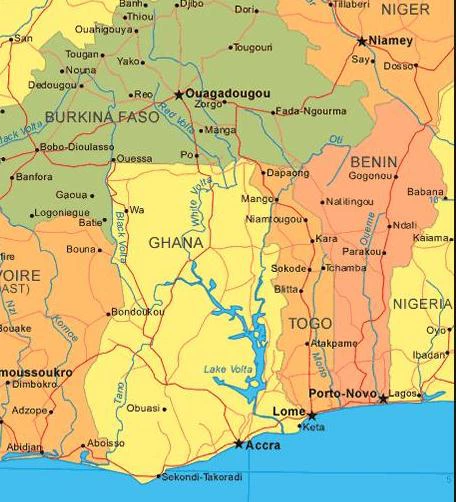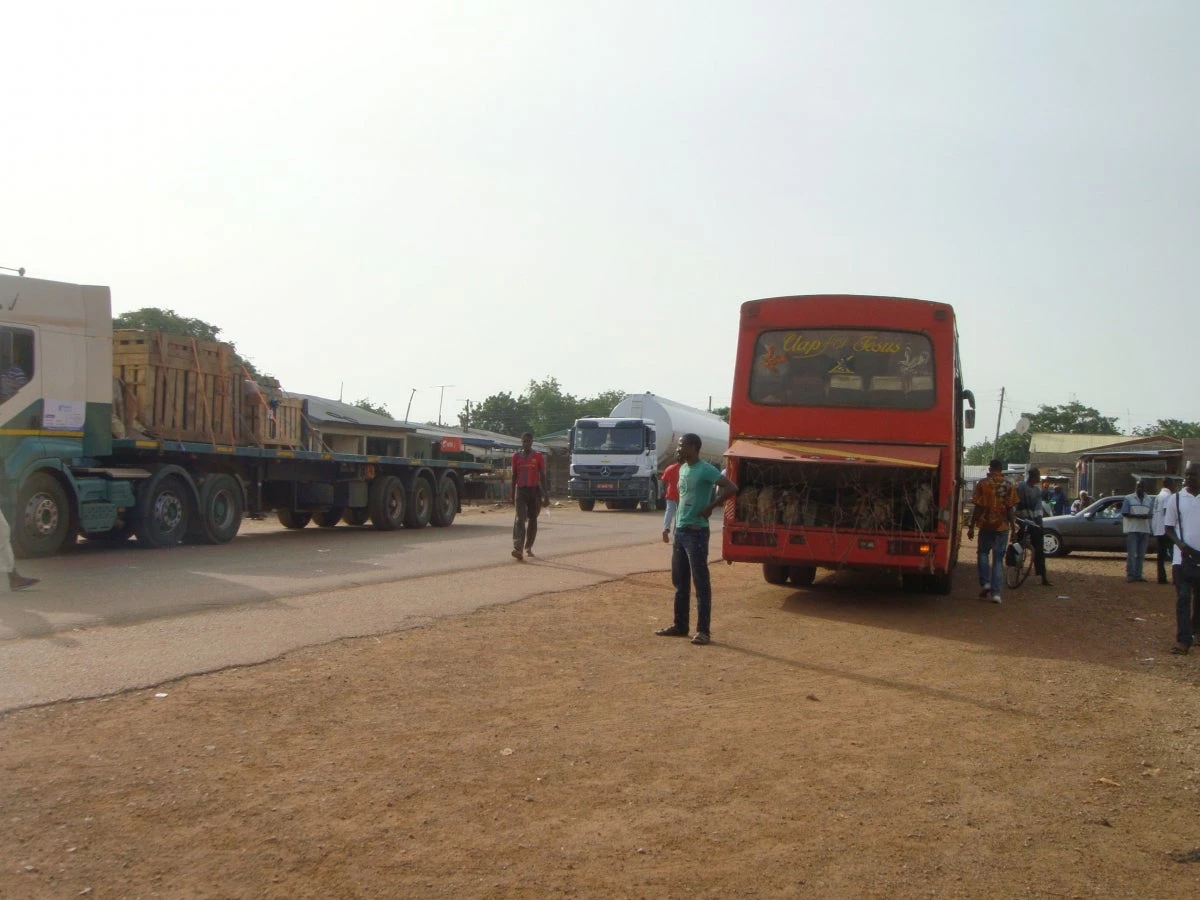The Ouagadougou-Accra-Tema corridor, a road stretching from Ouagadougou in West Africa’s Burkina Faso through Ghana’s bustling capital city Accra and onto the country’s port city Tema, is one of Africa’s most well-known corridors. In October, we joined Albert, a 50-year-old driver from Burkina Faso, on a 750 kilometer journey to highlight the high economic costs faced by landlocked countries and the cumbersome border crossings that impede trade.
The journey, which should have taken seven hours by car, took us 17 hours, 1 border crossing and 20 checkpoints.
Thirty-seven years ago, leaders from 16 countries established a regional free trade zone called Economic Community of West African States (ECOWAS). The organization has since adopted public policies to reduce trade barriers. While tariffs have come down significantly, other barriers remain, leading some of the world’s poorest countries–many of them landlocked–to trade less than 30 percent compared to their coastal counterparts. These countries face higher import prices and lower foreign direct investments. Weaker economic growth, fewer jobs, and poorer people are the consequence. You can read an interesting report on this topic from Jean-Francois Arvis and colleagues.

The single-lane road through sparsely populated areas from Ouaga to the Burkina-Ghana border was surprisingly smooth. Two and a half hours after leaving the city, we stopped at the Burkina gendarmerie where our driver had his passport stamped. The border traffic was heavy. As we inched closer to the crossing, dozens of trucks sat in line waiting to be processed.
Once we crossed the 50 feet into Ghana, we stopped at passport control and then document validation, where authorities required three stamps from three different offices. That took 90 minutes… annoying for us, but a breeze for truckers who often spend between several hours and, in extreme cases, days at the border trying to get across with their freight.
On into Ghana, we made our way through the northern part of the country where the vegetation was unmistakably greener and the houses and villages distinctly wealthier. Transportation in this particular area has been addressed to some degree. Roads were smooth, lanes adequately-sized and street signs clear. In Tamale, around noon, we caught a glimpse of a busy Sunday market.
 As we left, we saw trucks overloaded with freight. Like us, these trucks traveling the Ouagadougou-Accra-Tema corridor must pass through twenty police or customs checkpoints, many of them seemingly ad hoc. According to truckers, average border and checkpoint delays can add an extra day and a half to any one trip. For many of them, this means a night spent sleeping under their truck.
As we left, we saw trucks overloaded with freight. Like us, these trucks traveling the Ouagadougou-Accra-Tema corridor must pass through twenty police or customs checkpoints, many of them seemingly ad hoc. According to truckers, average border and checkpoint delays can add an extra day and a half to any one trip. For many of them, this means a night spent sleeping under their truck.
The drive through Kumasi, Ghana’s second largest city, took us another hour and a half. Kumasi roads are mostly in excellent condition except for the final 40 kilometers between Apedwa and Accra. This section of the road is unpaved and full of huge crater-like holes that make for a bumpy, slow and difficult journey. Along the road, many trucks were stopped for repairs; others drove alongside our car swaying dangerously from side to side as they navigated the craters.
After 16 hours on the road with one stop for lunch, we made the hour-long drive from Accra to the port of Tema, the largest and busier of Ghana’s two ports. About 2,000 workers shuttle an estimated 10 million tons of goods per year through the port.
While there, we saw a fascinating, three-masted Argentinian frigate ship sitting idle in the harbor. The Libertad, as we learned, had been at the port for two weeks due to an international dispute.
Despite being organized and seemingly well-managed, a stop at the Tema port means going through an elaborate maze of paperwork. Statistics show it takes an average 19 days to move a 20-foot container from the port to an inland terminal.
Altogether, our journey from Ouagadougou to Ghana’s Tema port took 17 hours over bumpy roads and through multiple stops. For truckers, those 17 hours could easily be 48.
What could help ease travel along this major trade corridor is fewer checkpoints, a change in regional policies and trade facilitation projects that remove bottlenecks. The World Bank is committed to working with African countries to provide solutions through knowledge and projects that include port and policy reform.
Related:
Video: Let Africa Trade with Africa
Report: Defragmenting Africa




Join the Conversation